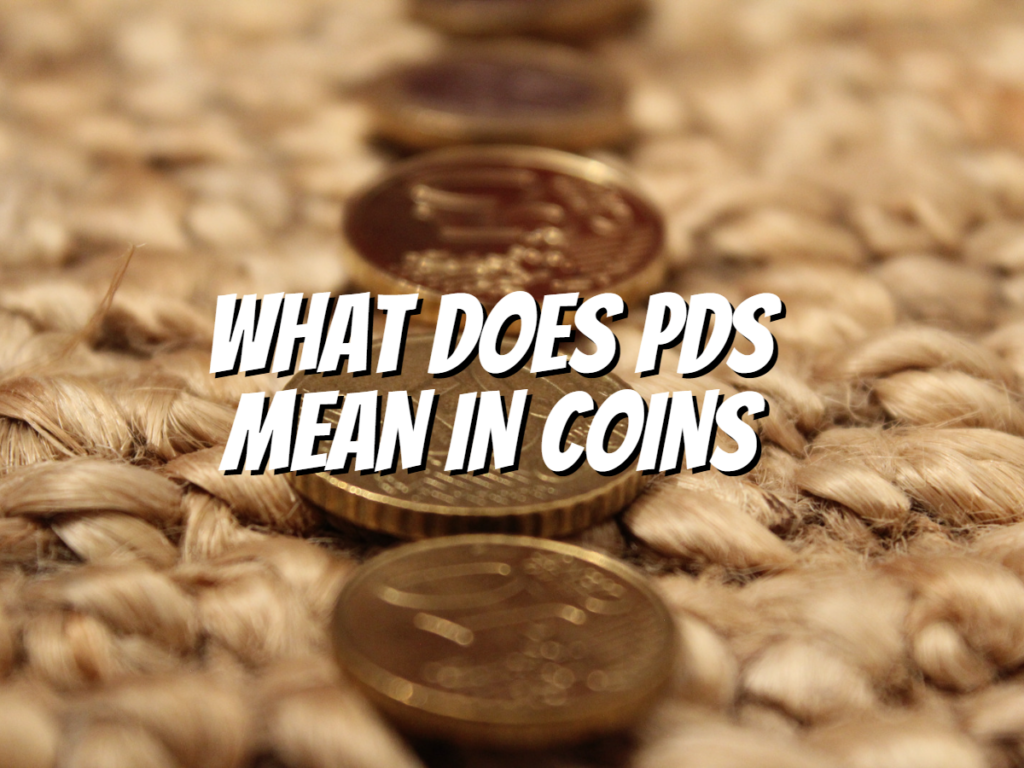What does PDS mean in coins? The Planchet, Die, and Strike (PDS) Grading System is an independent system not associated with the grading systems of PCGS and NGC.
Today, I’ll be discussing the grading system and its functionality.
What Does PDS Mean in Coins

So, what PDS means is Planchet, Die, and Strike. So, a planchet is a blank metal disc that hasn’t yet been stamped with a design.
It’s only after the design is added and the dies are used to strike it that it becomes the final product.
Well, you see, a die is a tool mints use to stamp designs onto coins. They apply pressure from above to engrave or incise the design.
The PDS Grading System
The PDS Grading System stands on its own and is not affiliated with the PCGS or NGC grading systems.
So, what the PDS system does is it evaluates coins that professional coin collectors have developed. The main goal is to provide a general method of grading coins.
The key thing that sets this grading system apart is that it doesn’t consider the strike or how well the coin was struck during its production.
The main reason for this differentiation is that most contemporary bullion coins are produced using dies on automated computerized presses.
So, each coin will have comparable finishes when you examine them separately.
Now, folks, if you take a gander at a bunch of coins of the same type all lined up together, like in a bag of them, you’ll notice some variations.
This is because they were all churned out by the same machine, cranking out thousands of identical coins in seconds!
Many Professionals use the PDS System as a General Method of Evaluating Coins.

The PDS grading system, ladies and gentlemen, is a widely used approach for assessing coins. Many professional coin collectors use it, but it’s not the same as the PCGS and NGC systems.
They both have their unique systems for evaluating coins. Steve Ivy and Ken Partain developed the PDS system to enable individuals to assess their coins independently without incurring expenses for professional evaluation services.
I can evaluate any coin minted in the United States with the PDS system.
This also applies to coins from other countries, private mints, and ancient coins. It’s important to note that with the United States having issued various types of coins over time, it’s crucial to know precisely what you’re examining before utilizing this approach.
Many professional coin collectors and dealers use this system to evaluate any coin minted in the United States.
According to the PDS method, coins are expected to be flawless without any defects that could reduce their worth.
Takeaway:
It’s important to have a coin grading system to distinguish between a high-quality coin and one that is flawed.
It’s important to know the grading system for coins to identify a good coin from an imperfect one.
To determine the value of a coin, it is important to understand each letter’s meaning when examining coins online or at a local dealer’s shop.
The PDS grading system, my friend, stands for “Poor” and has been in use since 1946.
The Professional Numismatists Guild (PNG) created it as their official standard for grading low-value coins such as dimes, quarters, dollars, and halves.
Folks, these coins typically go for under $10 a piece, but if you come across a top-quality one, it could sell for as much as $100!
Before you go…
The PDS Grading System can evaluate any coin minted in the United States. Coins graded using this method should be free from flaws or defects, such as spots or scratches, that would diminish their value. It is important for collectors who want to buy and sell coins to know how these systems work so they don’t get taken advantage of when buying from someone who knows less about grading them properly.
Check out my next article: “Coin Collecting Grading Terms.”
Related Articles:

